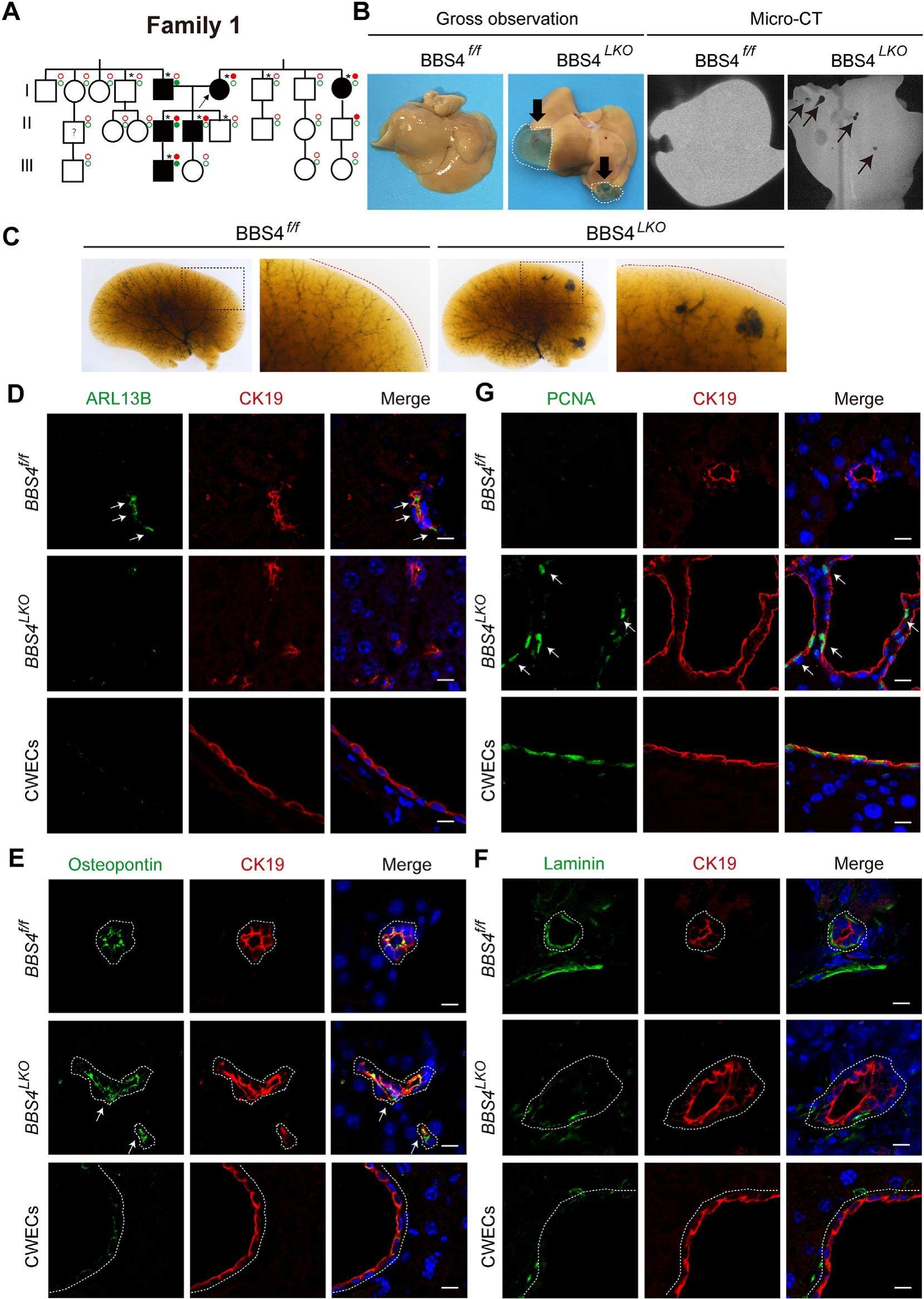
A BBS4 mutation causes autosomal dominant polycystic liver disease


Autosomal dominant polycystic liver disease (ADPLD) refers to a condition characterized by the presence of numerous cholangiocytes-lined and fluid-filled cysts in the liver and the absence of polycystic kidney disease. Although patients with ADPLD may be asymptomatic, some patients suffer from abdominal pain, gastroesophageal reflux, and nausea, because of hepatomegaly. These symptoms compromise the patient’s quality of life. In severe cases, complications such as intracystic hemorrhage, infection, and rupture may occur. This disease exhibits high genetic heterogeneity. Six genes, including PRKCSH, SEC63, ALG8, SEC61B, GANAB and LRP5, have been identified to have pathogenic variants causing ADPLD. However, about 55%e 70% of cases cannot be explained by the known loci. Hepatic cysts in ADPLD are derived from cholangiocytes. The development and progressive expansion of cysts are associated with a process called ductal plate malformation (DPM), which manifests as hyperproliferation and perturbed polarization of cholangiocytes as well as the abnormal structure and function of primary cilia in cholangiocytes. Most of the proteins encoded by genes associated with ADPLD are localized in the endoplasmic reticulum. So far, the role of ciliary-associated genes’ mutations in the pathogenesis of ADPLD has not been reported. Bardet-Biedl syndrome 4 (BBS4) is associated with the formation of the primary cilium and its mutation causes Bardet-Biedl syndrome, a rare autosomal recessive disorder. However, the role of BBS4 in ADPLD has not yet been reported.
